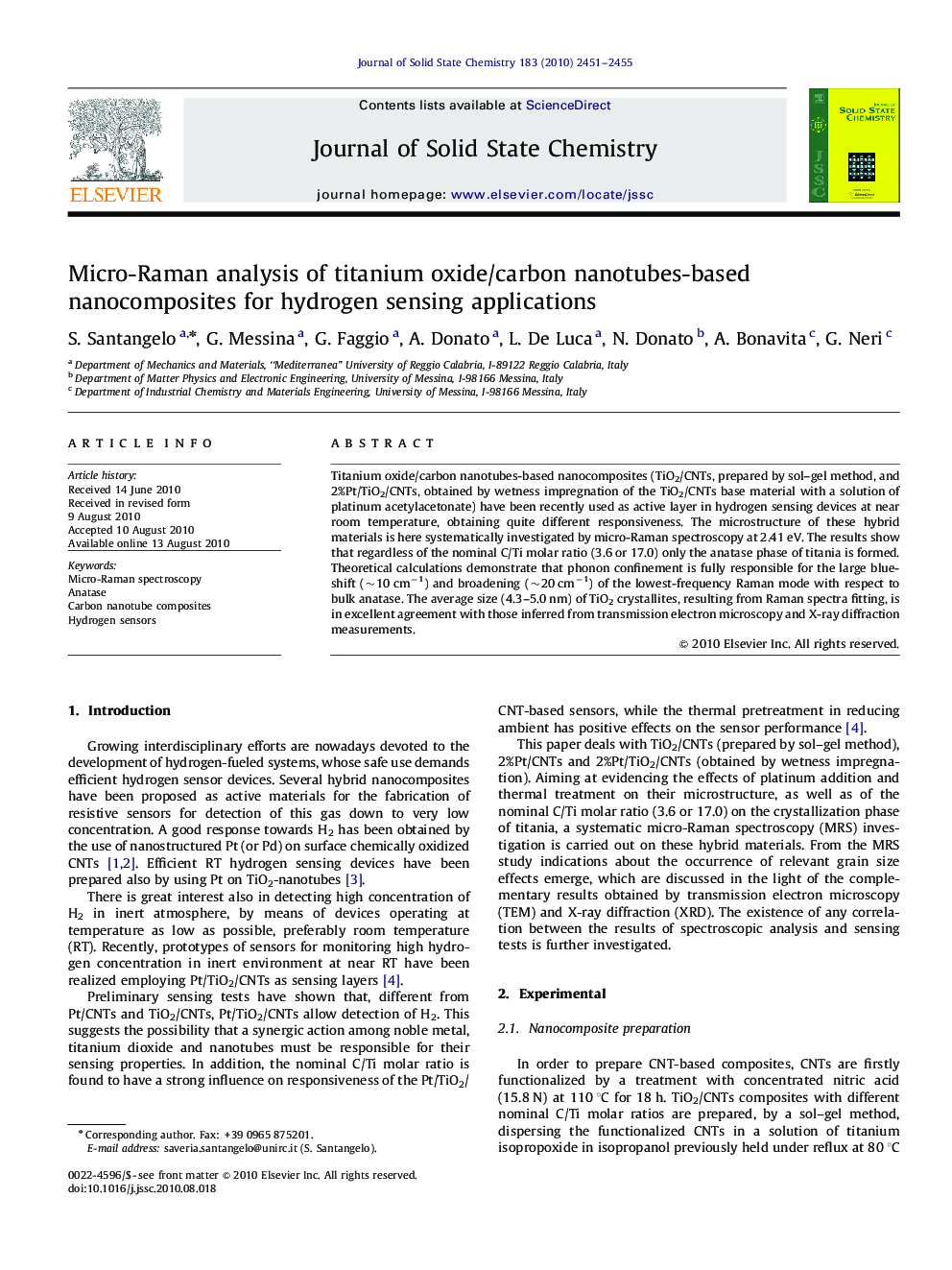| کد مقاله | کد نشریه | سال انتشار | مقاله انگلیسی | نسخه تمام متن |
|---|---|---|---|---|
| 1332357 | 979038 | 2010 | 5 صفحه PDF | دانلود رایگان |

Titanium oxide/carbon nanotubes-based nanocomposites (TiO2/CNTs, prepared by sol–gel method, and 2%Pt/TiO2/CNTs, obtained by wetness impregnation of the TiO2/CNTs base material with a solution of platinum acetylacetonate) have been recently used as active layer in hydrogen sensing devices at near room temperature, obtaining quite different responsiveness. The microstructure of these hybrid materials is here systematically investigated by micro-Raman spectroscopy at 2.41 eV. The results show that regardless of the nominal C/Ti molar ratio (3.6 or 17.0) only the anatase phase of titania is formed. Theoretical calculations demonstrate that phonon confinement is fully responsible for the large blue-shift (∼10 cm−1) and broadening (∼20 cm−1) of the lowest-frequency Raman mode with respect to bulk anatase. The average size (4.3–5.0 nm) of TiO2 crystallites, resulting from Raman spectra fitting, is in excellent agreement with those inferred from transmission electron microscopy and X-ray diffraction measurements.
Graphical AbstractMicro-Raman analysis of TiO2/CNTs and Pt/TiO2/CNTs hybrids for H2 sensing applications evidences that regardless of C/Ti molar ratio titania crystallizes in the anatase phase. The very small size of TiO2 crystallites (4.3–5.0 nm) is responsible for the observed phonon confinement effects.Figure optionsDownload as PowerPoint slide
Journal: Journal of Solid State Chemistry - Volume 183, Issue 10, October 2010, Pages 2451–2455